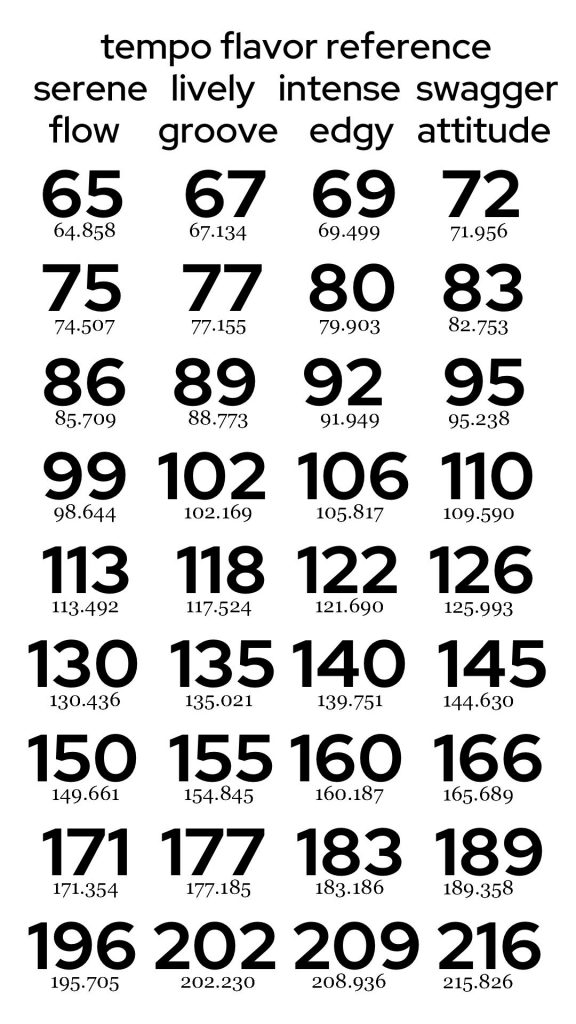Airwindows Nodal Tempo Guide
Here’s something interesting, that’s not even a plugin. I hope it’s useful, though it’s one of the more out-there researches I’ve explored. If this works, it allows for fine-tuning of musical feel on a whole new level. Click on it for the full size jpeg, which you can save and use.
Tempo seems to show ‘nodes’ of stability and instability that are so powerful that they help define entire genres, and there’s an algorithm for how that works. I think I’ve found the algorithm (and Airwindows fan Bo Danerius helped to brainstorm and refine it, so the exactness of the result owes as much to his efforts)
I found that there were songs, of entirely different tempos, that gave a common feeling of great stability and steadiness. At the same time, there were songs that seemed to be exploding with energy, where the groove seemed to ride on this knife-edge of ultimate excitement. They fell into a pattern, an algorithm cycling through stable and maximally unstable nodes.
Looking a bit further gave me something else: exactly halfway faster than the stable point, meant a node of ultimate groove. Not just one: a whole series of tempos that seemed to burst with energy but in an accessible way. And then, starting from the stable point and exactly halfway SLOWER to the ‘edgy’ node, gave a series of tempos loaded with swagger and attitude.
So I’ve made a reference. It’s simply a jpeg: that’s all you need here. In big type is the tempos you’ll use: the first column is the chill, serene, effortless flow node. The second is the livelier groove node, with just enough energy. The third column is the edge zone, where the intensity is overwhelming and high drama. And the fourth column is the swagger zone, where it’s the relaxed flow zone but more… emphatic. So, ‘serene/flow’, ‘lively/groove’, ‘intense/edgy’, and ‘swagger/attitude’. It’s possible to derive tempos slower and faster than this reference shows: I’ll provide links to the calculators used, I just felt it becomes less useful. Super-high tempos just come off as doubletime and the slower you get, the closer the nodes become until it can’t possibly be meaningful.
That said, I know people like to go crazy over this sort of thing, so in tiny type under the big tempo numbers is the exact numbers from the algorithm, to three decimal places. If you want to really REALLY zero in on a desired effect, there you go.
Read More
